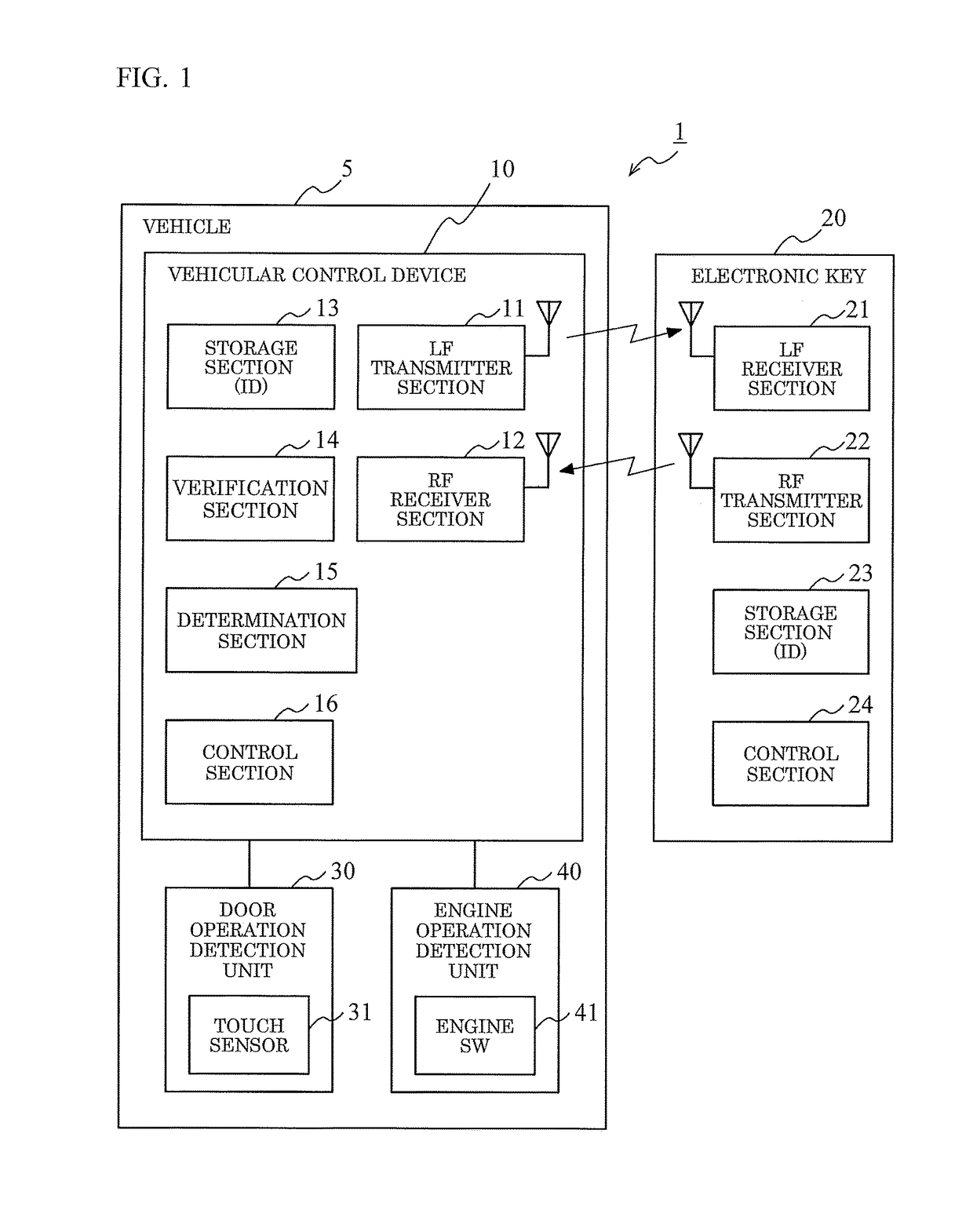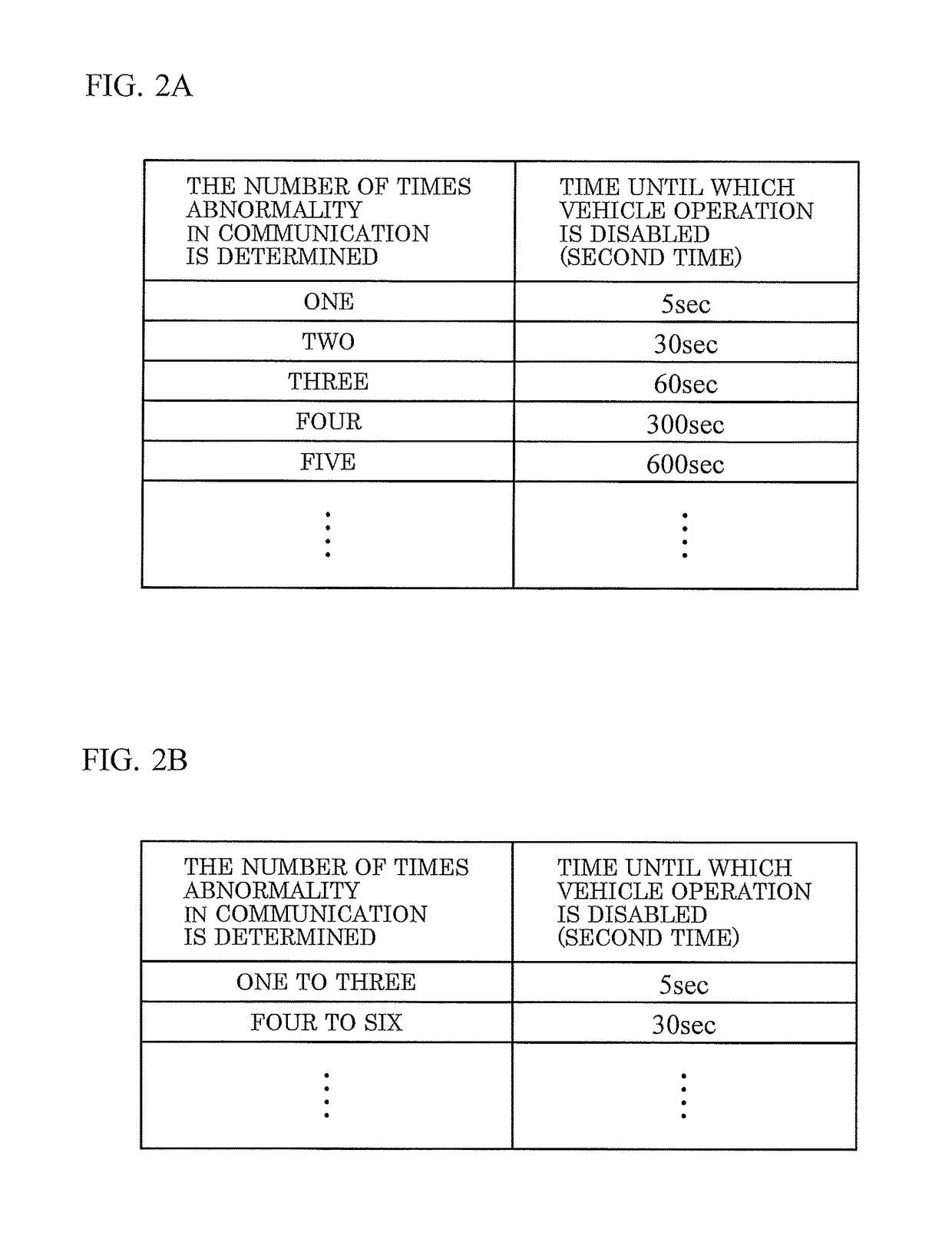Vehicular control device
a technology of vehicle control and control device, which is applied in the direction of anti-theft devices, instruments, vehicle components, etc., can solve the problem of delay in the time at which the following unauthorized access can be performed, and achieve the effect of avoiding the prohibition of vehicle operation
- Summary
- Abstract
- Description
- Claims
- Application Information
AI Technical Summary
Benefits of technology
Problems solved by technology
Method used
Image
Examples
first specific example
[0048]FIG. 3 is a flow chart showing process steps, of a first specific example, performed by the vehicular control device 10 according to one embodiment of the present invention. In the first specific example shown in FIG. 3, a case where the vehicle 5 in which the vehicle door is locked, is instructed to unlock the door by an action of “touching the touch sensor 31 mounted at a door handle” being performed as a predetermined input operation, is assumed.
[0049]Firstly, the counted value N is reset and initialized (step S301). After the counted value N is reset and initialized, the control section 16 determines whether or not a predetermined detection section detects an input operation onto the vehicle (step S302). In the first specific example, for example, the control section 16 determines whether or not the door operation detection unit 30 detects that the touch sensor 31 mounted at the door handle has been touched.
[0050]When it is detected that the touch sensor 31 has been touche...
second specific example
[0063]FIG. 4 is a flow chart showing process steps, of a second specific example, performed by the vehicular control device 10 according to one embodiment of the present invention. In the second specific example shown in FIG. 4, a case where an instruction is made for staring up an engine by an action of “pressing down an engine SW 41” being performed as a predetermined input operation in a state where a person is in the vehicle 5, is assumed.
[0064]Firstly, the counted value N is reset and initialized (step S401). After the counted value N is reset and initialized, the control section 16 determines whether or not the predetermined detection section detects an input operation onto the vehicle (step S402). In the second specific example, for example, the control section 16 determines whether or not the engine operation detection unit 40 detects that the engine SW 41 mounted at the instrument panel has been pressed.
[0065]When it is detected that the engine SW 41 has been pressed (Yes i...
PUM
 Login to View More
Login to View More Abstract
Description
Claims
Application Information
 Login to View More
Login to View More - R&D
- Intellectual Property
- Life Sciences
- Materials
- Tech Scout
- Unparalleled Data Quality
- Higher Quality Content
- 60% Fewer Hallucinations
Browse by: Latest US Patents, China's latest patents, Technical Efficacy Thesaurus, Application Domain, Technology Topic, Popular Technical Reports.
© 2025 PatSnap. All rights reserved.Legal|Privacy policy|Modern Slavery Act Transparency Statement|Sitemap|About US| Contact US: help@patsnap.com



